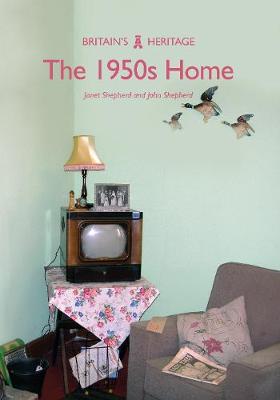Britain's Heritage
2 total works
Sixties children grew up in a more permissive and commercial age. They enjoyed a childhood in which new vaccines gave children protection from life threatening diseases while the contraceptive pill meant smaller family groups. A controversial programme of comprehensive education began to be rolled out while primary schools would become less rigid and more centred on the needs of the child. This was also the first young generation not to be conscripted into the armed forces.
Rising prosperity and rapid technological advances meant more children lived in homes with refrigerators, washing machines and science-inspired toys. Parents had more leisure time to spend with their children and television became the norm. Sixties children routinely travelled in cars and went on family holidays, increasingly abroad. Sweets and toys were plentiful in this first full decade without rationing. Teenagers had money to spend on fashion, pop music and, worryingly, drugs. The Beatles began to dominate the vinyl record market.
This book is part of the Britain's Heritage series, which provides definitive introductions to the riches of Britain's past, and is the perfect way to get acquainted with a 1960s childhood in all its variety.
Rising prosperity and rapid technological advances meant more children lived in homes with refrigerators, washing machines and science-inspired toys. Parents had more leisure time to spend with their children and television became the norm. Sixties children routinely travelled in cars and went on family holidays, increasingly abroad. Sweets and toys were plentiful in this first full decade without rationing. Teenagers had money to spend on fashion, pop music and, worryingly, drugs. The Beatles began to dominate the vinyl record market.
This book is part of the Britain's Heritage series, which provides definitive introductions to the riches of Britain's past, and is the perfect way to get acquainted with a 1960s childhood in all its variety.
The 1950s was a decade of transformation, as Britain moved from austerity to greater affluence. After the Second World War, there was a huge building programme and the creation of new towns brought a new mid-twentieth century vision of the home.
The architecture could be very different from what had gone before, and inside new fashions and materials had an impact on every home, old and new. By the mid-fifties, the consumer society was under way, and the arrival of new materials such as plastic and nylon revolutionised home interiors: colourful 'formica', labour saving gadgets, bright new furnishing fabrics - all became affordable. The new medium of television was increasingly to be found in modern living rooms. The growth in car ownership meant garages were required by an increasing number of home owners. More leisure time also led to a passion for DIY and an increasing desire for homes with gardens.
This book is part of the Britain's Heritage series, which provides definitive introductions to the riches of Britain's past, and is the perfect way to get acquainted with the 1950s home in all its variety.
The architecture could be very different from what had gone before, and inside new fashions and materials had an impact on every home, old and new. By the mid-fifties, the consumer society was under way, and the arrival of new materials such as plastic and nylon revolutionised home interiors: colourful 'formica', labour saving gadgets, bright new furnishing fabrics - all became affordable. The new medium of television was increasingly to be found in modern living rooms. The growth in car ownership meant garages were required by an increasing number of home owners. More leisure time also led to a passion for DIY and an increasing desire for homes with gardens.
This book is part of the Britain's Heritage series, which provides definitive introductions to the riches of Britain's past, and is the perfect way to get acquainted with the 1950s home in all its variety.

